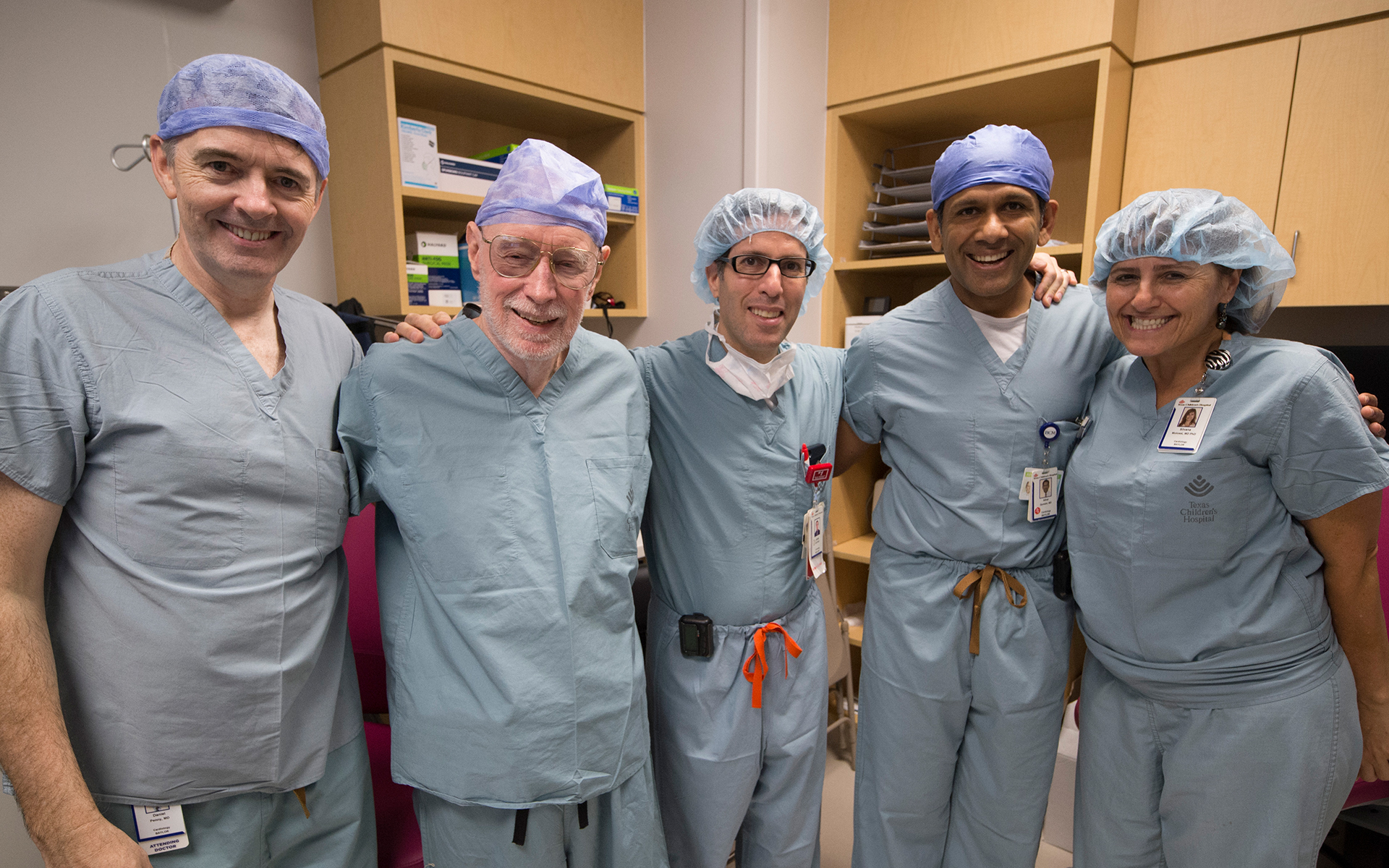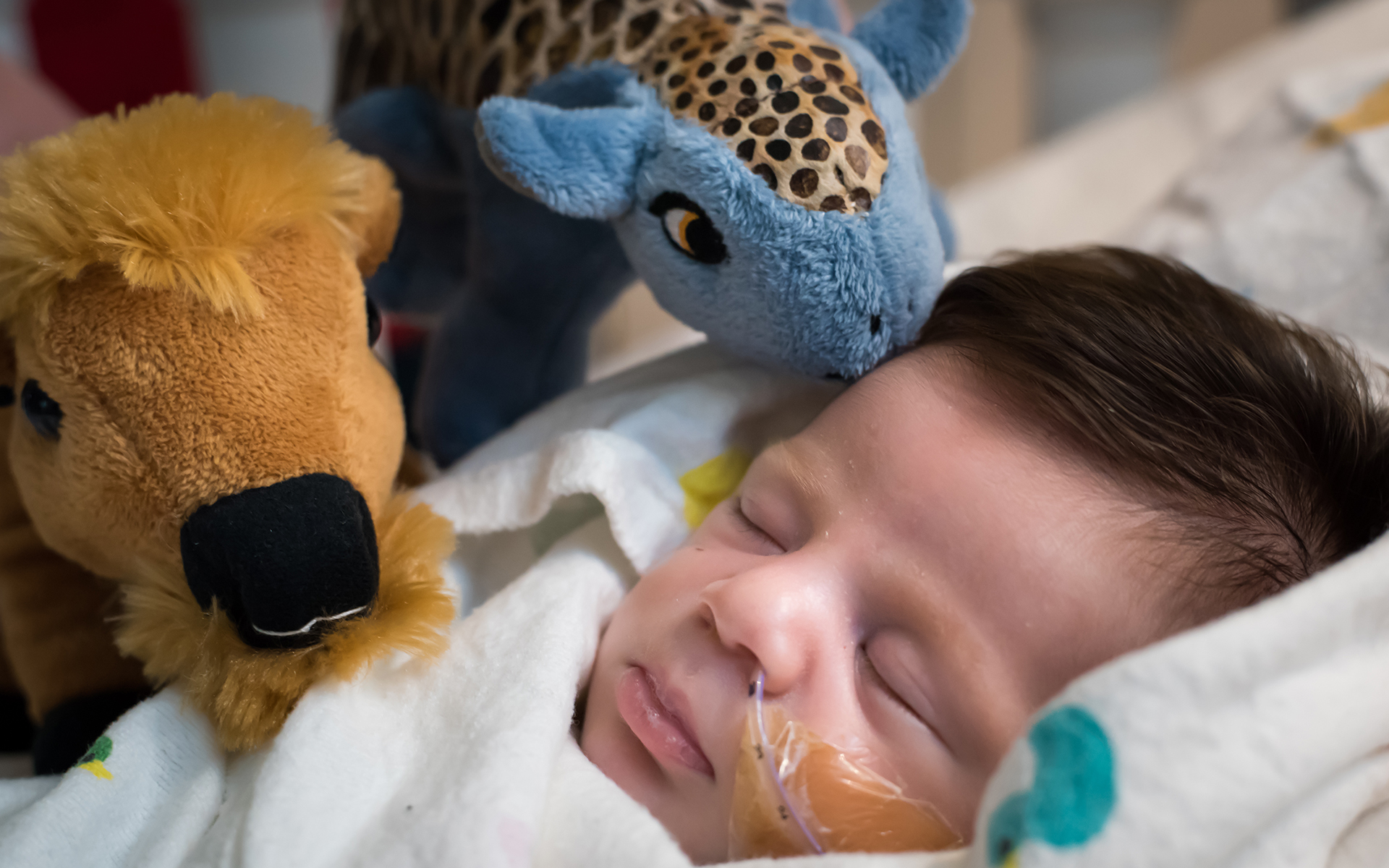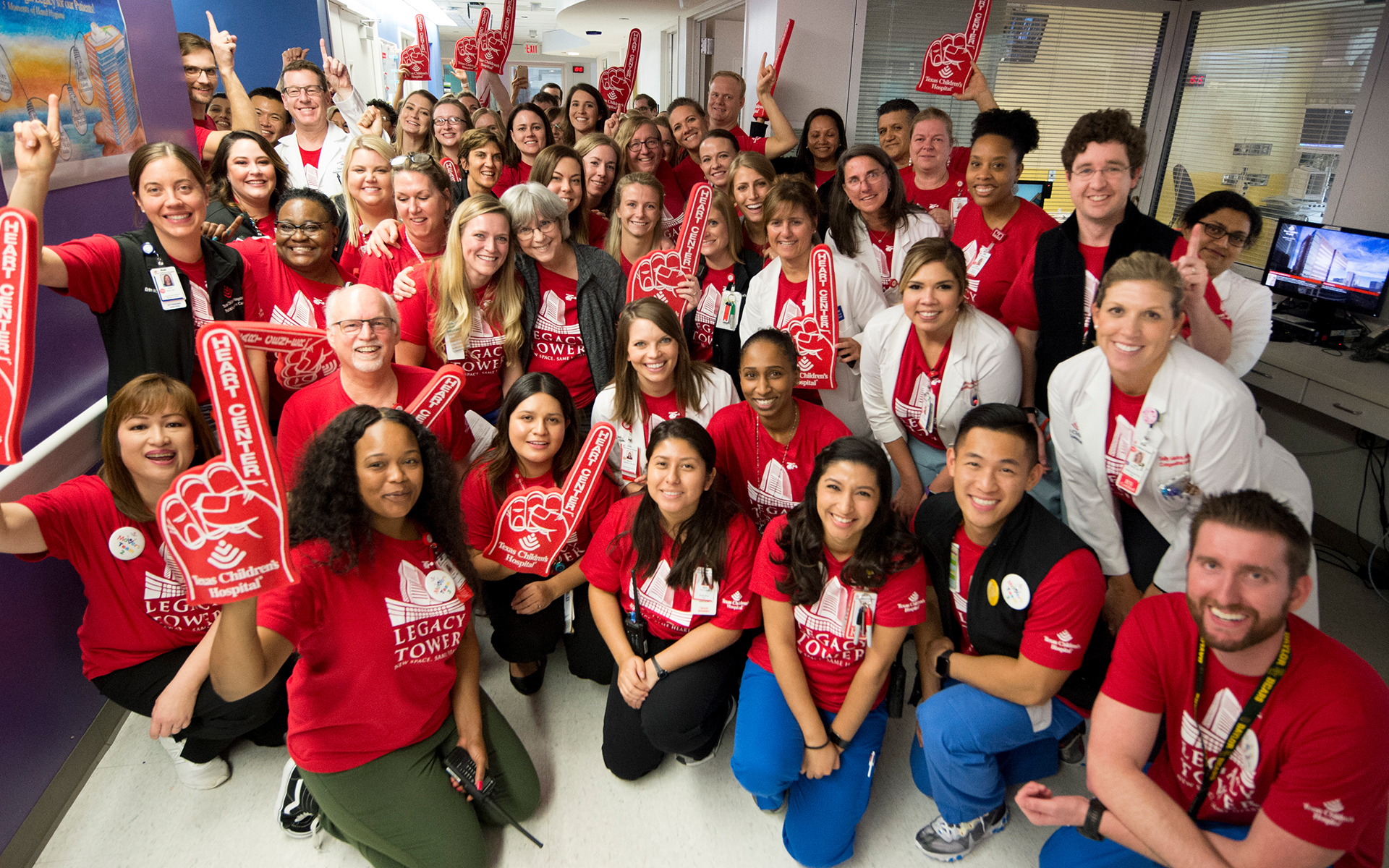Only a few short months after the first phase of the Lester and Sue Smith Legacy Tower opened in May 2018, Texas Children’s celebrated the successful completion of phase two with three major milestones – the opening of our new Texas Children's Heart Center outpatient clinic, move day for our Heart Center inpatient unit, and the opening of Texas Children's first helistop in the Texas Medical Center.
When patients and families came through the doors of the Heart Center's new outpatient clinic for the first time on September 18, they entered a space designed from top to bottom with them in mind.
“From the very beginning of the design process, the opening discussion for every space has been about making sure the focus is on the patient and that they have everything they need,” said Texas Children’s Chief of Cardiology Dr. Daniel Penny.
The outpatient clinic, situated on the 21st and 22nd floors of the the tower, was specially configured to offer families a more personal approach to care, and to handle high clinical volume.
One of the key differences in the new space is the incorporation of a pod-based care model, which integrates both echocardiogram and exam rooms. The clinic houses five pods, each with its own separate waiting area. Close proximity between echo and exam rooms enables greater coordination of care between teams. There are also two pods dedicated for cardiac surgery and arrhythmia specialists which house an additional six exam rooms apiece.
Additional clinic features are an expansive six-bed sedation area, with an additional five echo rooms, and two exercise labs. The sedation area’s layout creates improved visibility and access, which allows caregivers to monitor patients more closely. The exercise labs, critical to ongoing patient assessment, are linked by a central control room, similar to a catheterization lab. From here, physicians supervise tests and monitor real-time patient data displayed on banks of high-resolution monitors. The exercise lab also features a dedicated space for pacemaker care.
Because the layout of the new clinic’s pod-based space is significantly different than the previous outpatient clinic, simulations played a huge role both in initial design and final development. Comprehensive workload and patient flow simulations tested everything from clinical and documentation systems to safety processes to patient movement through the clinic at various volume levels. Additionally, computer-based simulation models were used to monitor check-in processes, wait times and potential bottlenecks to help make necessary changes to the process flow.
Over the course of about eight hours on September 25, six specially-trained clinical teams comprising more than 200 members transported 64 heart patients, some of whom were critically ill, safely to their new, state-of-the-art rooms in the tower. The patients ranged in age from 3 days to 22 years.
The next few days were full of firsts for Texas Children’s Heart Center – the nation’s No. 1 pediatric heart center according to U.S. News & World Report.
On September 26, 11-year-old Colin Rankin of Dallas became the first patient to undergo a cardiac catheterization procedure and an intra-cath MRI in Lester and Sue Smith Legacy Tower at the Heart Center’s new Charles E. Mullins, M.D. Cardiac Catheterization Laboratories. And on September 27, Associate Chief of Congenital Heart Surgery Dr. Jeff Heinle cut the ribbon to officially open the Heart Center’s new cardiovascular operating rooms, and to usher in a new era of cardiac surgery at Texas Children’s. Later that morning, 4-year-old Rizan Merchant underwent the first surgical intervention in the expansive new space – a Fontan procedure, performed by Heinle.
Throughout the entire move and in the days afterward, the Lester and Sue Smith Legacy Tower Go Live Support Center was set up on the fourth floor of the Pavilion for Women and included hundreds of individuals from across the hospital system focused on tracking the patient move from West Tower to the new tower. The team comprised support staff from Supply Chain, Security, BioMedical Engineering, Facilities Operations, Information Services, Pharmacy and Respiratory Care.
“We all are incredibly blessed by this space, but this move isn’t just about the building. It’s the people as well,” said Vice President Judy Swanson. “We have such a committed, amazing team, all of whom worked so hard to make this move happen and to make it special for our patients and families.”



On November 7, Texas Children’s Hospital clinical leadership, executives and members of our specialized transport unit Kangaroo Crew and communications teams gathered on the roof of new tower for a special ribbon cutting ceremony marking the opening of the new helistop – the final element of Lester and Sue Smith Legacy Tower to go live.
“The Lester and Sue Smith Legacy Tower has always been about improving care for the sickest children we see,” said Surgeon-in-Chief Dr. Larry Hollier. “The helistop is important because it improves access for those children. Whether they’re being transported as part of a scene response for an auto accident or transferred from another hospital, we can now get children and women here in very rapid fashion within a 150-mile radius.”
The new helistop is the third in the Texas Children’s system, with others in operation at Texas Children's Hospital West Campus and Texas Children’s Hospital The Woodlands. The addition of the new helistop will facilitate the rapid transport of patients across all populations, including neonatal and maternal patients. Before the helistop opening, Texas Children’s received roughly 150 helicopter transports a year, which landed at nearby partner institutions. Now we’ll be able to offer our care to even more patients who need us.
“A tremendous amount of work has gone into making sure that the helistop is very safe – safe for the helicopters coming in, safe for those crews that are delivering the patients to us, and safe for our own staff,” said Executive Vice President Mark Mullarkey.